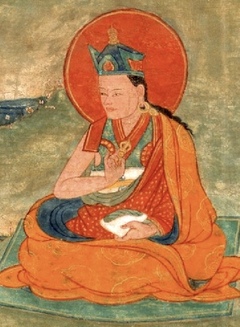Checking Progress on the Path
English | Deutsch | Français | 中文 | བོད་ཡིག
Pithy Advice on Checking One's Progress on the Path
from The Essential Amrita of Profound Meaning: Oral Instructions and Practical Advice Bestowed Upon Fortunate Followers, Eye-Opener to What Is To Be Adopted and Abandoned
by Chokgyur Dechen Lingpa
To know whether or not you’re aware of impermanence,
Check if your plans are long- or short-term.
To know whether or not you perceive saṃsāra as flawed,
Check if you have attachment and desire.
To know whether or not you’ll attain liberation in the next life,
Check whether your conduct is good or bad.
To know whether or not you’ll attain awakening in this life,
Check if you display the signs of progress in generation and completion.
To know whether or not you’ve generated love and compassion,
Check how you take care of those in need.
To know whether or not you’ve tamed the demon[1] of anger,
Check how much hatred you foster toward enemies.
To know whether or not you’ve tamed the ogress[2] of attachment,
Check how attached you are to your loved ones.
To know whether or not you’ve dispelled the obscuring evil[3] of ignorance,
Check how much you cling in hope and fear.
To know whether or not you’ve purified the three poisons,
Check how much you've let go of fixation.
You’ll know whether or not your Dharma practice follows the path
By thoroughly examining your mind.
This was written by Chokgyur Lingpa at the request of the Galap Dzong Lama, Könchok Tenzin Chökyi Lodrö.[4] May it bring goodness!
| Samye Translations, 2020.
Bibliography
Source text
mchog gyur gling pa, “rjes 'jug skal bzang rnams la bstsal pa’i zhal gdams bslab bya nyams len gyi skor spang blang mig 'byed zab don snying gi bdud rtsi.” In mchog gling bka’ ’bum skor. Vol. 36 of mchog gling bde chen zhig po gling pa yi zab gter yid bzhin nor bu’i mdzod chen po, 87–88. Kathmandu, Nepal: Ka-Nying Shedrub Ling Monastery, 2004.
Secondary Sources
Nebesky-Wojkowitz, René De. Oracles and Demons of Tibet: The Cult and Iconography of the Tibetan Protective Deities. Delhi: Book Faith India, 1996. (First Published The Hague: Mouton & Co., 1956)
Version: 1.1-20250228
-
Demon here translates rgyal 'gong, a type of malevolent spirit born from the union of rgyal po and 'gong po spirits. (René de Nebesky-Wojkowitz, Oracles and Demons of Tibet, 300). ↩
-
Ogress here translates srin mo, a female rākṣasa, or rākṣasī. ↩
-
Evil here translates gdon, a general name for evil spirits or malevolent influences. ↩
-
Könchok Tenzin Chökyi Lodrö (dkon mchog bstan 'dzin chos kyi blo gros, 1801–1859), also known by his tertön name Nüden Dorjé (nus ldan rdo rje), was a Drigung Kagyü throne-holder, sixth Drikung Chungtsang and thirty-second abbot of Drigung Til ('bri gung mthil). See his profile on TBRC: https://www.tbrc.org/#!rid=P2230. ↩
